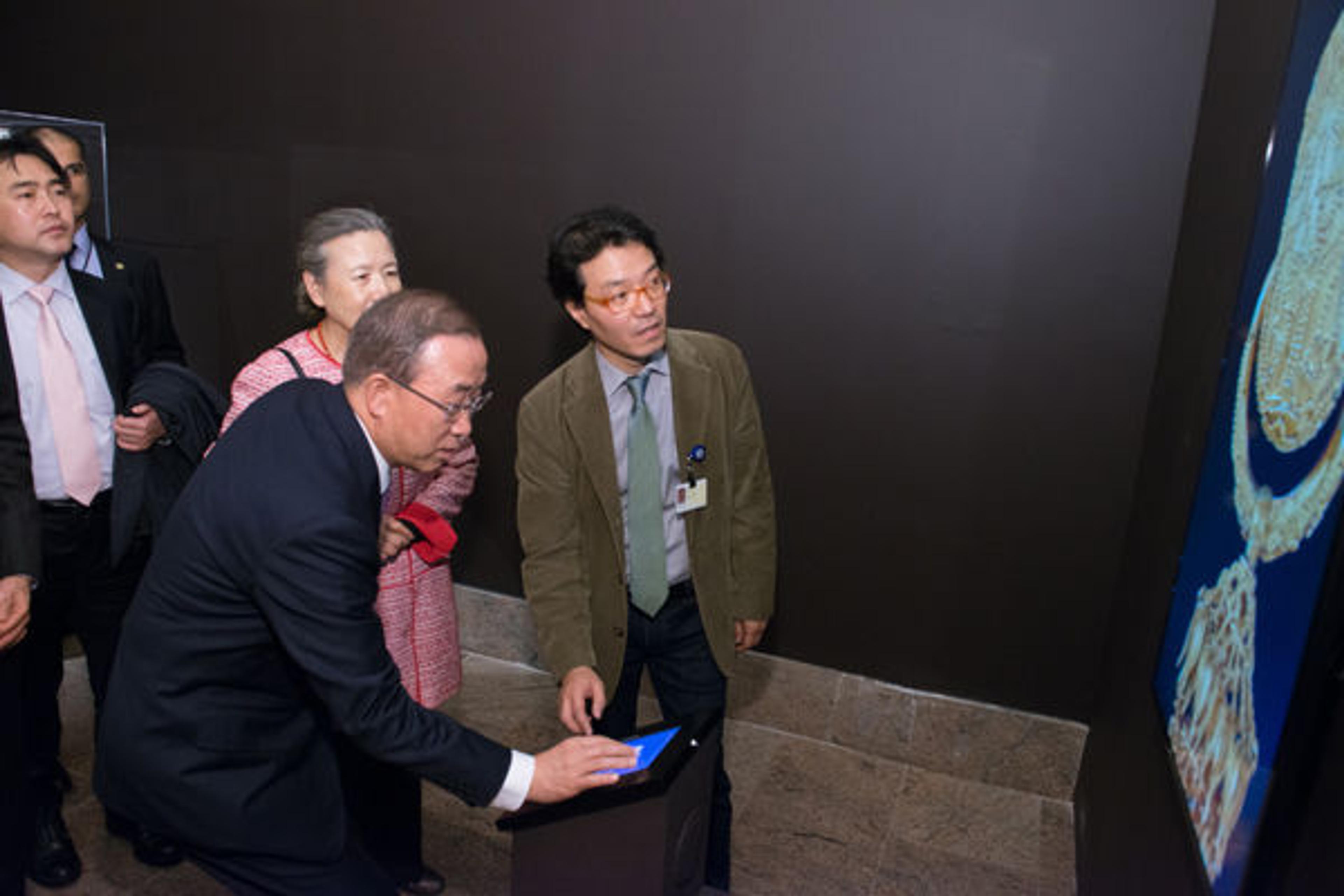Modern Technology Meets Ancient Art in Silla: Korea's Golden Kingdom

Video projection and title wall at the entrance to the exhibition
«Do you like the digital media in the exhibition Silla: Korea's Golden Kingdom? Ranging from an eye-catching, wide-screen projection of a majestic burial site to a 3D animation of a famous monument, the technology in the exhibition is there to enhance a visitor's experience of the art on display.»
The video projection in the entry room transports you to Gyeongju, the ancient Korean capital. It appears as though you are standing in front of the Great Tomb of Hwangnam, the largest Silla tomb. Exhibition designer Michael Lapthorn explains: "Rather than a traditional photo mural, a video gives the illusion of a live feed, [making] it more real and immediate; you are there."
Inside the galleries, there are two 3D animations. The first demonstrates how the Great Tomb of Hwangnam was built in the fifth century. The second shows the construction of a renowned eighth-century Buddhist grotto known as Seokguram, which still exists in Korea today. Exhibition co-curator Denise Leidy has dubbed this video "lego for adults."

Video of Seokguram grotto in the Silla exhibition. Produced by colleagues at the National Museum of Korea and other institutions in South Korea
The exhibition includes a tablet-to-screen device that allows you to examine a gorgeous pair of earrings up close and from all angles, and to view short video demonstrations of gold-working techniques. It also includes a digital map that locates the origins of some of the exotic imports found in Silla tombs. Looking at the map, you can see that Silla was part of the broader world of Eurasia. Additional tablets at the end of the exhibition offer visitors a chance to explore various aspects of Silla art and culture from different perspectives and to preview the catalogue.

UN Secretary General Ban Ki-moon tries out the interactive feature on the tablet-to-screen device.
None of this technology would have been possible without the contributions of several members of the Museum's Digital Media and Design Departments, along with those of colleagues in Korea. The Met staff members pictured below were instrumental in producing and implementing the digital media in the exhibition.

Left, from left to right: Christopher Noey, general manager of creative production; Robin Schwalb, senior audio-visual specialist; Paul Caro, senior manager of media production and technology services; Kate Farrell, editor/producer; and Kevin Park, senior design and production manager; not pictured: Natasha Mileshina, interactive designer. Right: Michael Lapthorn, exhibition design manager
Come explore the digital presentations in Silla: Korea's Golden Kingdom, on view through February 23. We hope you'll be inspired to take a closer look at the beautiful artworks on display.
Soyoung Lee
Curator Soyoung Lee joined the Department of Asian Art in 2003 and is responsible for The Met's Korean art collection, programs, and galleries. She has organized major international loan exhibitions with accompanying catalogues, including Silla: Korea's Golden Kingdom(2013) with Denise Patry Leidy and Art of the Korean Renaissance, 1400–1600 (2009), as well as shows focusing on the permanent collection such as Korea: 100 Years of Collecting at the Met (2015). She holds a PhD from Columbia University, with a dissertation on the relationship between Korean and Japanese ceramics from the 15th through the 19th century.
Denise Leidy
Denise Patry Leidy is a curator in the Department of Asian Art.